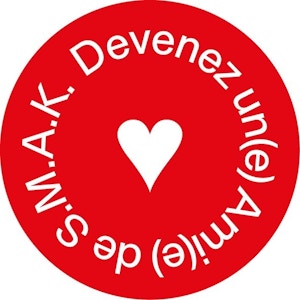1981
mixed media
b. 482cm x d. 9.5cm
1981 aankoop
mixed media
b. 482cm x d. 9.5cm
1981 aankoop
NL - Fabro komt net als de schrijver en cineast Pasolini uit Friuli, een streek in Noordoost-Italië. Ze hadden gemeenschappelijke vrienden maar ontmoetten elkaar nooit. In 1976, een jaar na de nog altijd onopgehelderde, gruwelijke moord op Pasolini, besluit Fabro een tentoonstelling in Rome aan hem op te dragen. Daarbij spitst hij zich toe op één zin uit een historische tragedie die Pasolini in het Friuliaans schreef: “Le na roba massa grande par pode pensala.” of “Het is te groot om het te bedenken.” Fabro vindt de zin van toepassing op Pasolini’s overlijden en laat zich er voor ‘Il Viaggio’ door inspireren. Hij wil een werk maken “dat de weg opent naar andere betekenissen” en komt uit op deze ranke ‘regenboog’ met een bootje van papier, gevouwen van een pagina uit Pasolini’s geschriften. Verfijnde schoonheid, ontroerende en poëtische tederheid komen er op een geraffineerde manier met intellectuele scherpte in samen.
De nacht voor de opening van Fabro’s tentoonstelling in Rome is er in Friuli een heftige aardbeving die onder meer het huis van zijn familie verwoest. Fabro stopt onmiddellijk met de opbouw van zijn tentoonstelling en trekt naar Friuli. De volgende dag opent de tentoonstelling zonder werken, leeg maar vol andere betekenissen: het was “te groot om het te bedenken” maar het toeval had ernaar geleid. Begin jaren ’80 toont Fabro ‘Il Viaggio’ voor het eerst in het Museum van Hedendaagse Kunst, de voorloper van S.M.A.K. Later verandert hij er uit bijgeloof een detail aan dat hij geheimhoudt en stelt hij het werk om dezelfde reden nooit meer zelf tentoon.
ENG - Like the writer and film-maker Pasolini, Fabro was from Friuli, a region in North-Eastern Italy. They had several friends in common, but never met. In 1976, a year after the horrific murder of Pasolini, which has still not been solved, Fabro decided to dedicate an exhibition in Rome to him. He focused on a single sentence from a historical tragedy that Pasolini wrote in the Friuli dialect: “Le na roba massa grande par pode pensala.” or “It is too big to conceive of.” Fabro thought the sentence was appropriate to Pasolini’s death and took inspiration from it for ‘Il Viaggio’. He wanted to do a work “that opened the way to other meanings” and ended up with this slender ‘rainbow’ with a paper boat folded out of a page from Pasolini’s writings. It subtly combines refined beauty, and moving and poetic tenderness with intellectual acuity.
The night before the opening of Fabro’s exhibition in Rome, there was a violent earthquake in Friuli which among other things destroyed his family home. He immediately halted work on his exhibition and went to Friuli. The next day, the exhibition opened without any works, empty but full of meaning: it was “too big to conceive of”, but it was coincidence that had led to it. Fabro showed ‘Il Viaggio’ for the first time in the early 1980s, at the Museum of Contemporary Art, the forerunner of the S.M.A.K. Later, for superstitious reasons, he changed a detail, which he kept a secret, and for the same reason never again exhibited the work himself.
FR - A l’instar de l’écrivain et cinéaste Pasolini, Fabro vient du Frioul, une région du Nord-Est de l’Italie. Ils avaient des amis communs, mais ne se sont jamais rencontrés. En 1976, un an après l’assassinat atroce et toujours non élucidé de Pasolini, Fabro décide de lui consacrer une exposition à Rome. Il se concentre à cette occasion sur une phrase d’une tragédie historique que Pasolini a écrit en dialecte frioul: « Le na roba massa grande par pode pensala » ou « C’est trop grand pour l’inventer.» Fabro trouve que la phrase s’applique à la mort de Pasolini et s’en laisse inspirer pour ‘Il Viaggio’. Il veut réaliser une œuvre « qui ouvre la voie vers d’autres significations » et il aboutit sur cet ‘arc-en-ciel’ élancé avec un petit bateau en papier, plié avec une page des écrits de Pasolini. Une beauté délicate, une tendresse touchante et poétique s’y réunissent d’une manière raffinée avec une acuité intellectuelle.
La nuit qui précède l’exposition à Rome de Fabro, un violent tremblement de terre dans le Frioul détruit entre autres la maison familiale. Fabro arrête immédiatement la construction de son exposition et part pour le Frioul. Le lendemain, l’exposition ouvre sans œuvres, vide mais pleine d’autres significations: c’était “trop grand pour l’inventer”, mais le hasard y avait conduit. Au début des années ’80, Fabro montre ‘Il Viaggio’ pour la première fois au Musée d’Art contemporain, le prédécesseur du S.M.A.K. Plus tard, il en change un détail par superstition qu’il garde secret et il n’expose plus jamais lui-même l’œuvre pour la même raison.
Collectionnumber : 563




















